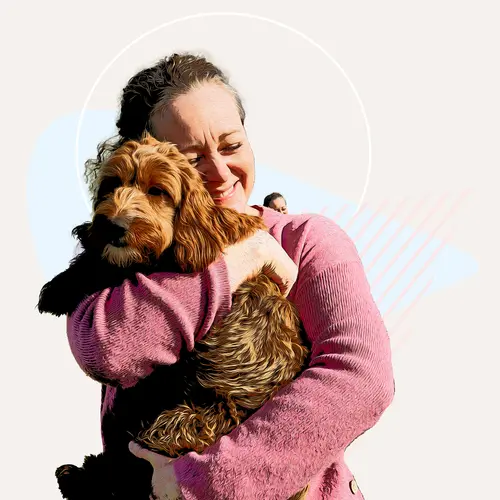Nearly 10% of all children have a fear or phobia of some kind. While some children go through temporary phases of fearing something, other fears last through multiple stages of life. A fear of dogs is one such phobia, sometimes caused by a frightening encounter and other times for seemingly no reason at all. Here are tips for helping your child feel comfortable with dogs.
Understanding Fear in Children
During the infant and toddler stage of development, your child may show signs of anxiety or fear of:
- Strangers
- Separation from parents
- Meeting new people
- Unfamiliar settings
As they grow up, these fears fade away. However, adolescence replaces these fears with worries about:
- Ghosts or monsters
- Getting sick or dying
- Losing a parent, family member, or friend
- Severe weather
If a fear lasts less than six months, it is considered transient. This means that the fear passes by and doesn’t last long. If your child shows fear of something for six months or longer, it may be a phobia.
If your child has a fear or phobia of dogs that disrupts their life, you can address the fear and help your child cope so they can move past it.
Addressing a Fear of Dogs
As a parent, your instinct is probably to reassure and comfort your child when they are afraid of something. However, it is important for you to help your child develop healthy coping mechanisms so they can self-soothe when they feel afraid.
By giving your child the tools they need to overcome fear independently, you help them build confidence. You may not always be with your child when they are around a dog, but you can help them understand what to do in the situation. Having a next step in mind can go a long way in reducing their fear of dogs.
Self-Regulating
As an adult, you probably self-regulate your thoughts without even realizing you’re doing it. You negotiate and talk yourself down when fear emerges so that your emotions are under control. Your child doesn’t have those techniques until someone teaches them.
While self-regulation is a difficult concept for a child to grasp, you can practice it out loud. Talk to your child about dogs. Ask questions about their fear and ask questions about dogs so that your child can answer. This helps you learn more about why they are afraid, but it also teaches them how to process their feelings out loud.
In the future, they may think back to their conversations with you, asking the same questions in their mind. When you give your child space to feel uncomfortable and anxious, they also have space to process those emotions and address them.
Parents, Don’t Be Afraid
You probably wish you could take away all of your child’s fear and anxiety, so they don’t have to feel it. You may worry about their fear of dogs, wondering how it may affect their life – especially if you have a pet dog in your home. If you’re afraid of your child’s fear, they will sense that.
Your fear may cause you to separate your child and a dog or to make the situation go away, so you don’t have to address it. Instead, allow your child to practice independence. See how they work through their fear in the moment instead of providing an immediate fix.
Offering Support
You can still be supportive without overstepping. That doesn’t mean you have to leave your child alone with a dog and go into another room. You can sit beside your child silently, offering support only if they ask for it. You can also offer support by interacting with the dog to show them that it’s OK. This may help your child feel more comfortable with a dog if they can see that it won't hurt someone else.
If it helps, explain any dog behaviors that are intimidating to your child, like:
- Loud barking
- Running around
- Licking or nipping
- Jumping
Questions you can ask after a particular encounter include:
- How did you feel with that dog?
- Why did you feel (sad/scared/afraid/emotion that they named)?
- What was scary?
- Was there anything you liked about the dog?
- Did the dog hurt you?
Be careful not to put words in your child’s mouth. Your first question shouldn’t be, “Was the dog scary?” This implies fear, and your child may feel something else. If possible, allow them to use their words to talk about how they feel. Then, use those same words to ask additional questions.
Create a Plan
We all feel better when we have a sense of control over a situation. Your child may not know when or where they will see a dog next, but they can be prepared with a plan of action. Talk about things like:
- How to approach a dog
- What to do if a dog approaches you
- How to tell others you’re afraid of dogs
- How to anticipate when you might see a dog
You can facilitate the planning, but give your child room to set their own goals. If you don’t have a pet dog, you may consider visiting a friend or relative who has a dog for practice.
Seeking Help
If your child is so afraid of dogs that it impacts their day-to-day life, seek help. Talk to your pediatrician about available resources and pursue counseling for your child. A psychologist may offer additional guidance for how you can help your child cope.


